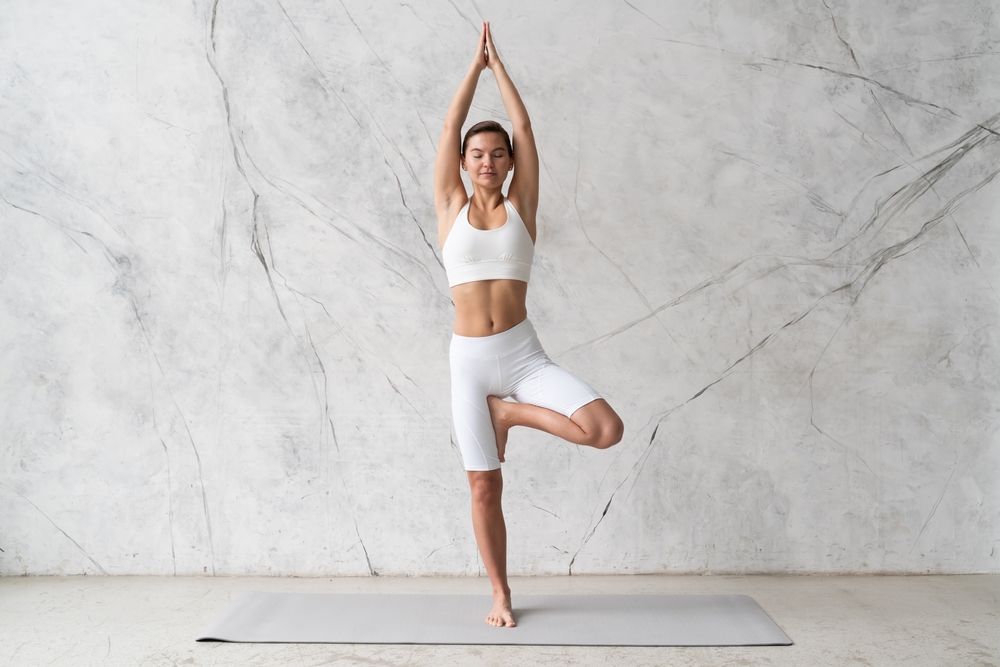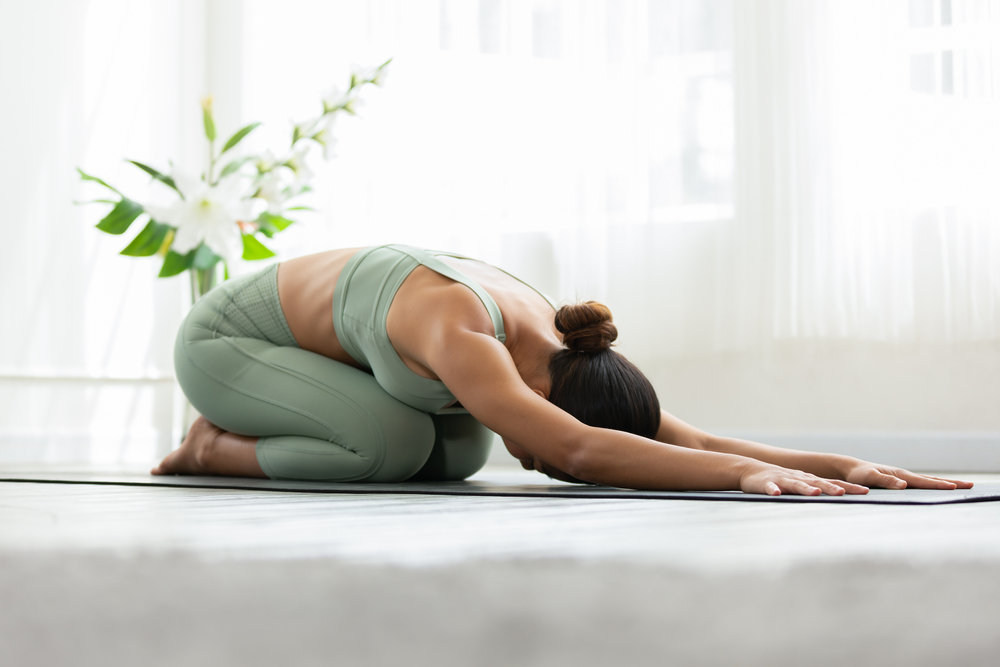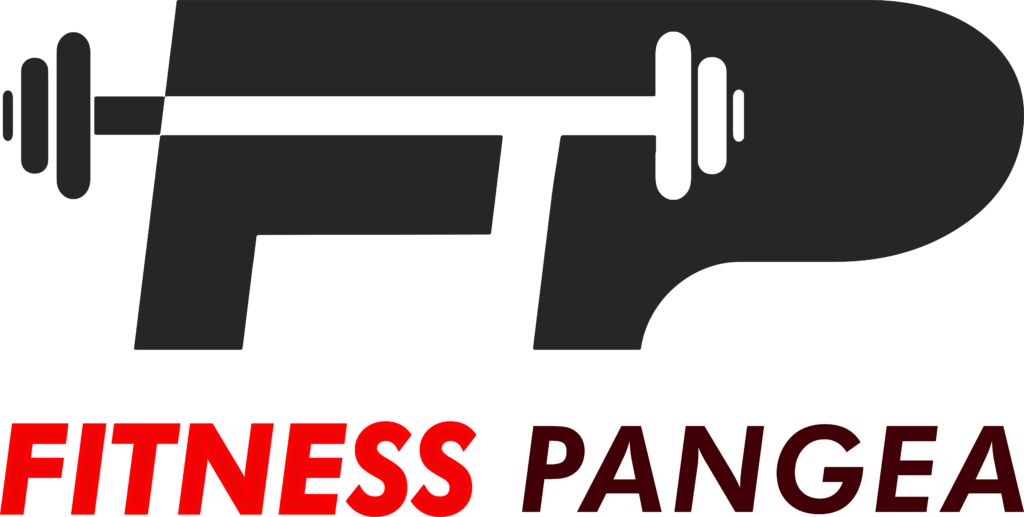As a beginner in yoga, there are plenty of poses that might feel overwhelming and complex. However, here are steps that can help you build up to the ‘slow and gradual’ processes of yoga then roll out on yoga mat for the best yoga workout for beginners.
As you progress, it is advisable to start off with simple yoga poses in the beginning. Therefore, start with easy yoga poses and then move onto more challenging poses.
The Beginners yoga poses outlined here are valuable enough to keep you occupied for a long time. These easy to follow simple yoga poses are also good for strength, flexibility, stamina, and weight loss.
1. Mountain Pose (Tadasana)
This simplest yoga pose teaches one to stand with majestic steadiness like a mountain. The word ‘Tada’ means a mountain, that’s where the name comes from. Mountain Pose is the base for all standing poses; It involves the major groups of muscles and improves focus and concentration. Mountain pose may seem like “simply standing,” but there is a lot going on.
How to do it
- Stand with your toes joined and heels at some distance then hang your arms besides the torso.
- Spread your toes and put the weight evenly on your feet. Firm your thigh muscles while simultaneously rotating them inwards and relax your shoulders and roll them back and down.
- Then begins the process of inhaling and exhaling. As you inhale, elongate your torso and when you exhale, release your shoulder blades away from your head. You can put your hands in a prayer position in front of your chest, or also rest them by your sides.
- Take long, slow, deep breaths in.
Beginner’s Tip
You can check your alignment by standing against the wall initially. You can even raise your hands and stretch them while breathing easily.
2. Tree Pose (Vrksasana)
Tree pose is an incredible standing balance for beginners to work on to gain focus and clarity, and steady breathing while standing and keeping the body balanced on one foot. It mimics the steady stance of a tree.
How to do it
- Begin with your feet together and put your right foot on your inner left upper thigh. Fold your hands in prayer and pick a spot on the front that you can hold in a steady gaze.
- Hold and take a breath for 8-10 times then change sides. Make sure you don’t lean into the standing leg while keeping your core engaged and shoulders relaxed.
Beginner’s Tip
Stand with your back braced against a wall if you feel unsteady in this pose.

3. Triangle (Trikonasana)
Triangle is an excellent standing posture to stretch your sides of the waist, open up your lungs, strengthen the legs and tone your body. Triangle Pose is the essential standing pose in many styles of yoga.
How to do it
- Stand with your feet wide apart. Stretch your right foot out (90 degrees) while keeping the leg closer to the torso. Keep your feet pressed against the ground and balance your weight equally on both feet.
- Inhale and as you exhale Rest your right hand on your shin, ankle, or the floor outside your right foot, Stretch your left arm toward the ceiling.
- Turn your gaze up to the top hand and stay in this pose for 5-8 breaths. Inhale to come up and repeat on the opposite side.
Beginner’s Tip
Place your back heel or the back of your torso against a wall if you feel unsteady in the pose.
4. Warrior I (Virabhadrasana I)
Warrior pose is essential for building strength and stamina in a yoga practice. It gives us confidence while building strength in the entire lower body and core.
How to do it
- Stand in Tadasana (Mountain Pose). With an exhale, step or lightly jump your feet apart. Raise your arms perpendicular to the floor (and parallel to each other)
- Turn your left foot in 45 to 60 degrees to the right and your right foot out 90 degrees to the right. Align the right heel with the left heel. Exhale and rotate your torso to the right.
- With your left heel firmly on the floor, exhale and bend your right knee over the right ankle so the shin is perpendicular to the floor.
- To come up, inhale, press the back heel firmly into the floor and reach up through the arms, straightening the right knee. Turn the feet forward and release the arms with an exhalation. Take a few breaths, then turn the feet to the left and repeat for the same length.
Beginner’s Tip
When you’re bending the front knee, as a beginner you have a tendency to tilt the pelvis forward. You must lift the pubis up toward the navel and lengthen the tail toward the floor.
5. Downward-Facing Dog (Adho Makah Svanasana)
Downward Dog is used in most yoga practices and yoga classes and it stretches and strengthens the entire body. It may be the first pose you learn as you begin a yoga practice. It acts as a transitional pose and can be a resting position.
How to do it
- Come onto the floor on your hands and knees. With your hands slightly forward of your shoulders and knees below your hips. Spread your hands wide and press your index finger and thumb into your mat.
- Exhale and lift your knees away from the floor lift the butt toward the ceiling. Straighten your legs as much as you can and press your heels gently toward the floor.
- Your head should be between your arms, facing your knees, and your backs should be flat.
- Hold for 5-10 breaths.
Beginner’s Tip
If you have difficulty releasing and opening your shoulders in this pose, raise your hands off the floor on a pair of blocks or the seat of a metal folding chair.
6. Upward-Facing Dog (Urdhva Mukha Svanasana)
Upward facing dog pose, is often practised in sequence with adho mukha svanasana, downward facing dog pose. It is a powerful pose that awakens upper-body strength and offers a wonderful stretch for the chest and abdomen.
How to do it
- Lie on your stomach on mat . Stretch your legs back, with the tops of your feet on the mat. Bend your elbows and spread your palms on the mat beside your waist.
- Inhale and press your inner hands firmly into the mat Then straighten your arms and simultaneously lift your cheat up and your legs a few inches off the mat.
- Pull your shoulders back, squeeze your shoulder blades, and tilt your head toward the ceiling, to open up your chest.
Beginner’s Tip
There’s a tendency in this pose to “hang” on the shoulders, which lifts them up toward the ears and create pressure at the neck. Actively draw the shoulders away from the ears by lengthening down along the back armpits, pulling the shoulder blades toward the butt, You can also use a block underneath each hand. Feel free to drop your knees down to reduce tension in your low back.
7. Seated Forward Fold ( Paschimottanasana )
It’s important to bend forward in yoga practice to stretch the hamstrings, lower back, upper back and sides. Seated forward bend is the perfect yoga pose for beginners to start to open the body and learn to breathe through challenging positions.
How to do it
- Sit on the floor with your buttocks supported on a folded blanket your legs extended in front of you. Breathe in and raise your hands over your head to stretch relaxingly. Extend the arms forward, reaching for your feet.
- Lift your chest, engage your lower abdominals and imagine the belly button moving towards the top of your thighs.
- Hold the pose for at least 10 breaths before slowly releasing with an inhalation.
Beginner’s Tip
If you feel any sharp pain, you need to back off; but if you feel the tension when you fold forward and you can continue to breathe, you will slowly start to loosen up. You can also keep your knees bent in the pose as long as the feet stay flexed and together.
8. Bridge Pose (Setubandhasana)
Bridge pose (Setu Bandhasana) acts as a way to bridge the gap between body and mind. A counter pose to a forward bend is a back bend. Bridge is a good beginner’s backbend that stretches the front body and strengthens the back body.
How to do it
- Begin lying comfortably on your back in a supine position and place your feet hip width apart.
- Press firmly on to your feet and lift your butt up off the mat. Interlock your palm and press the shoulder toward the floor.
- Imagine dragging your heels on the mat towards your shoulders to engage your hamstrings. Hold for 8-10 breaths then lower your hips down and repeat two more times.
Beginner’s Tip
A restorative version of Bridge pose with a block or bolster underneath the sacrum is a divine way to release the low back and can also help to ease menstrual cramps and discomfort.
9. Child Pose ( Balasna )
Balasana, also known as child’s pose, is a gentle resting pose that stretches the hips, thighs, and legs while calming the mind and relieving stress and tension. Everyone needs a good resting pose and Child pose is an excellent one not just for beginners but for yoga practitioners of all levels.
How to do it
- Kneel on the floor. Touch your big toes together and sit on your heels, then separate your knees about as wide as your hips.
- Exhale and lay your abdomen resting between your inner thighs and rest your forehead on the mat.
- Rest your arms by your sides with your palms facing up near your feet.
- Stay in the pose from 5 to 10 breaths. To come up, first lengthen the front torso, and then with an inhalation Gently release back.
Beginner’s Tip
Place a blanket under the hips, knees and/or head. If pregnant, spread the knees wide apart to remove any pressure on the abdomen.

10. Savasana (Corpse Pose)
No yoga session is complete without a final relaxation posture. Even though Corpse Pose (Savasana) is a resting pose,despite looking easy, Savasana (Corpse Pose) has been called the most difficult of the asanas. You should try to stay present and aware during the five to 10 minutes you spend in final relaxation.
How to do it
- Lie down on your back. Separate your legs. Bring your arms alongside your body, but slightly separated from your torso. Turn your palms to face upwards.
- Let your breathing occur naturally. If your mind wanders, you can bring your attention to your breath but try to just notice it while being aware, not deepen it.
- Stay for a minimum of five minutes. Ten minutes is better.
- To come out, first begin to deepen your breath. Then begin to shake your fingers and toes, slowly reawakening your body. Stretch your arms overhead for a full body stretch from hands to feet, slightly bend your knees and turn to the side. Using your hands for support, bring yourself back up into a sitting position.
Beginner’s Tip
To emphasize the feeling that the body is rooted in the earth, place a folded blanket over your thighs. A block just under your navel has a similar effect, as does an eye pillow.
CONCLUSION
Give yourself plenty of time to learn these poses. Dedicate some time daily (or every few days) to relax in a comfortable space and review your practice. It’s a good idea to wear workout tank tops with low support and four-way stretch to move with you through poses. With regular yoga sessions, you’ll find that your body moves comfortably from one pose to the next for improved physical function and wellness.



